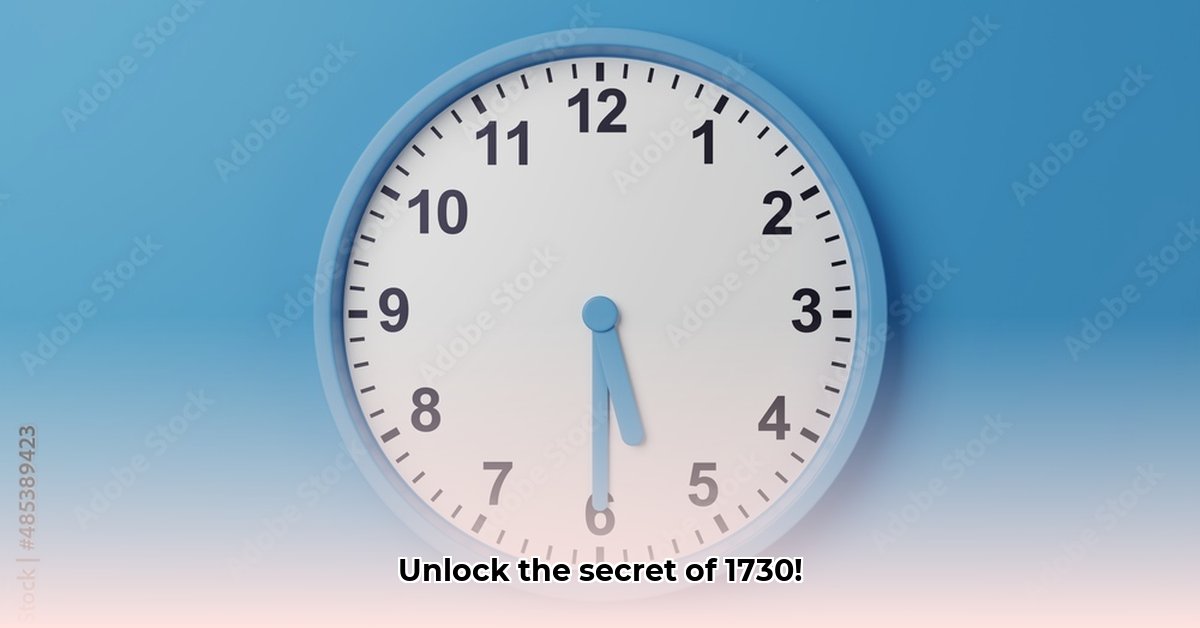Confused by times like 1730? You’re not alone! This guide demystifies military time, also known as the 24-hour clock, and provides simple methods to convert it to standard time. For more in-depth time zone information, check out this helpful resource. Whether you’re deciphering schedules in aviation, coordinating international travel or simply want to understand a different way of telling time, this guide will turn you into a military time pro.
Understanding Military Time: The Basics
Military time, or the 24-hour clock, removes the ambiguity of AM/PM found in the 12-hour clock. This system is used in various sectors, including the military, aviation, emergency services, and international communication.
The 24-Hour Clock Explained
The 12-hour clock, with its AM and PM designations, can sometimes lead to confusion, especially when communicating across different time zones or in situations where precision is critical. Military time eliminates this potential for error by using a continuous 24-hour cycle. Instead of resetting at noon, the hours continue counting until reaching 23:59, after which the clock resets to 00:00 (midnight).
This continuous count simplifies scheduling, reduces the risk of miscommunication, and ensures clarity in time-sensitive situations. It’s like the odometer in your car, keeping a continuous record rather than starting over twice a day.
Converting Military Time to Standard Time: A Step-by-Step Guide
Let’s convert 1730 together. Follow these steps:
-
Recognize the Format: Military time is expressed as HHMM, where HH represents the hours and MM represents the minutes. In the example of 1730, “17” signifies the hours, and “30” indicates the minutes.
-
Determine AM or PM: If the hour is between 00 and 11, it refers to AM. If the hour is 12 or greater, it’s PM. Since 17 is greater than 12, 1730 is a PM time.
-
Convert the Hour: For PM times, subtract 12 from the hour. So, 17 – 12 = 5. The minutes remain unchanged.
-
Combine the Results: 1730 in military time is equal to 5:30 PM in standard time.
This method works for any military time format allowing you to easily convert to standard time.
Special Cases: Midnight (0000 and 2400)
Midnight can be represented as either 0000 or 2400. While both denote midnight, their usage depends on context. 0000 typically signifies the beginning of a new day, used in schedules or digital displays. Conversely, 2400 indicates the end of a day, often employed in shift reports or logs. Think of 0000 as the starting gun and 2400 as the finish line of a day.
A Handy Conversion Chart
| Military Time | Standard Time |
|---|---|
| 0000/2400 | 12:00 AM |
| 0100 | 1:00 AM |
| 0600 | 6:00 AM |
| 1200 | 12:00 PM |
| 1300 | 1:00 PM |
| 1800 | 6:00 PM |
| 2359 | 11:59 PM |
Practice Time!
Test your skills with these examples:
- Convert 0545 to standard time. (Answer: 5:45 AM)
- What is 1620 in standard time? (Answer: 4:20 PM)
- Translate 2200 to standard time. (Answer: 10:00 PM)
Why is Military Time Important?
Military time’s precision is vital in several fields.
- Aviation: To coordinate flights and prevent potentially disastrous timing errors.
- Military: For clear communication and coordinated operations.
- Healthcare: For accurate medical records.
- Emergency Services: To maintain precise timing during critical situations.
- International Communication: To avoid ambiguity that can occur across time zones.
Military Time and the Phonetic Alphabet
Besides the standard conversion methods, aviation and military sectors often use the NATO phonetic alphabet alongside military time to ensure clear communication, especially over radio.
When relaying the time “1730” verbally, it would be communicated as “One Seven Three Zero” using standard numbers. However, with the phonetic alphabet, it becomes:
- “One Seven Three Zero” or, more formally, “One Seven Tree Zero.”
Using “Tree” for “Three” is common in aviation to avoid confusion with other similar-sounding words.
Examples of Military Time with Phonetic Alphabet:
- 0600: Zero Six Zero Zero
- 1400: One Four Zero Zero
- 2130: Two One Three Zero (or Tree Zero)
- 0000: Zero Zero Zero Zero
This removes any chance of misinterpretation when voices are unclear on radio frequencies, or heavy accents are involved.
The Significance of Understanding Military Time
Mastering military time will expand your understanding of schedules. It’s invaluable if you work in an environment that uses the 24-hour clock. Even if you do not, understanding it ensures you can handle scheduling situations clearly and confidently. Embrace this universal form, and enhance your time-telling capabilities!
- Vertical Axis Wind Turbine Design: Improving Efficiency and Overcoming Limits - October 29, 2025
- Wind Turbine to Power Home: Nacelle Design Improvements Advance - October 26, 2025
- Wind Turbine Blade Length: How Long Is Too Long? - October 24, 2025
















